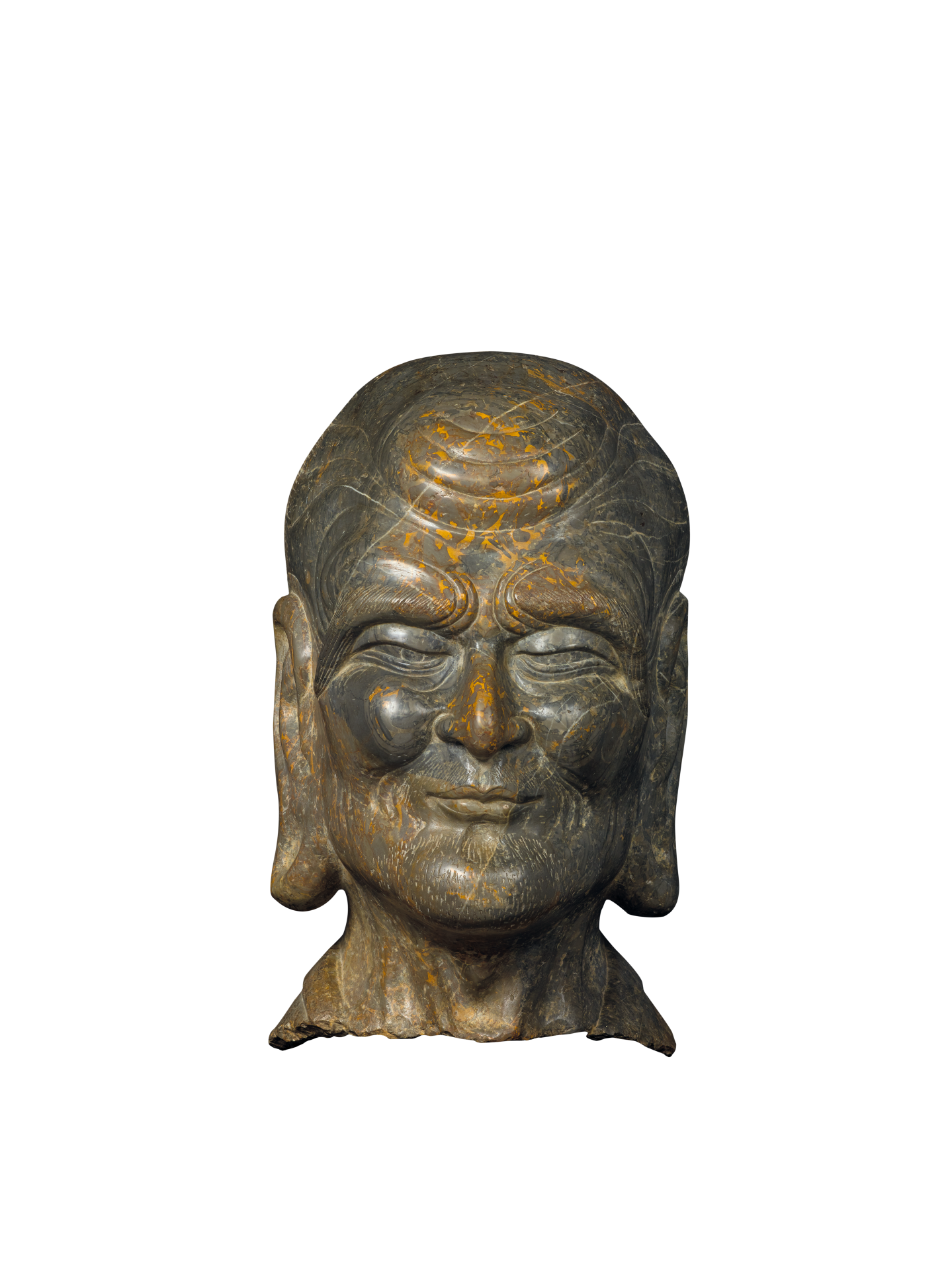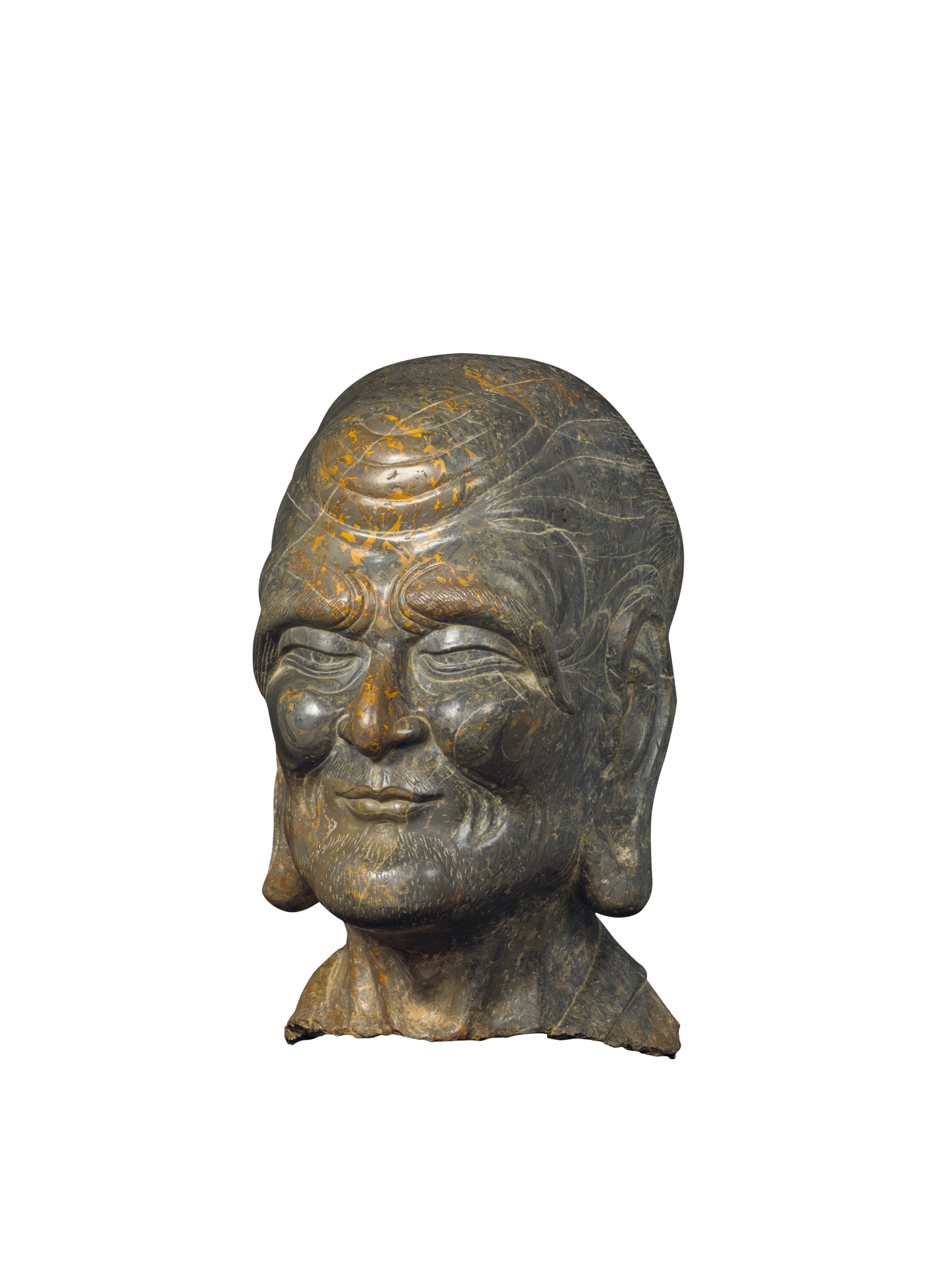Head of Mahākāśyapa
Venerable Mahākāśyapa was born into a wealthy Brahmin family. He was originally a fine-looking fellow but after renouncing secular life and practising the Twelve Austerities, he looked thin and gaunt. He was the foremost in ascetic practice among the Buddha’s disciples. In the sermon given at Vulture Peak by the Buddha who held up a flower and spoke nothing, Mahākāśyapa was the only one who got the message and he smiled knowingly. The Buddha then directly transmitted his koan to Mahākāśyapa and entrusted the latter a golden kāṣāya to be passed to Maitreya, the Future Buddha. The Buddha also specifically said to Mahākāśyapa in front of the crowd, “The virtuous Mahākāśyapa, please share my seat.” Feeling perplexed, the crowd wondered what virtue Mahākāśyapa had to earn him such an honour. The Buddha then praised Mahākāśyapa in front of the crowd and explained that Mahākāśyapa had attained the fourth level of Dhyāna and his virtue was on a par with the Buddha, thus entitled to sharing a seat with the Buddha. After the Buddha entered parinirvāṇa, Mahākāśyapa became the head the monastic community and continued to propagate the Buddhist Dharma. Eventually, he entered deep meditation at Mount Kukkutapāda (in Magadha in ancient India).
This head of Mahākāśyapa has knitted eyebrows, sunken eye sockets, hollow cheeks, eyes gazing forward, tightly pursed lips and a solemn countenance. To highlight Mahākāśyapa’s weathered face, the sculptor has carved long and deep incised lines on his forehead, around the eyes and at the lip corners to represent his wrinkles, and used abruptly chiselled short lines to denote his eyebrows and beard. The skin is finely modelled, the details smoothly contoured, and the surface sleekly polished. The head is very lifelike and vivid in spirit. Stylistically, the statue was probably produced in the early Ming dynasty.

